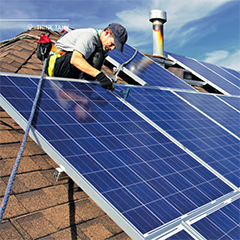In times of growing demand for renewable energy sources and clean electricity, there are more and more small private installations on rooftops, carports and similar, in addition to large PV plants and projects on an international scale. But successfully ‘going solar’ requires thorough planning and careful evaluation of components to be installed. This article describes a typical scenario and points out several decisive factors and potential risks when it comes to the safe installation and continued reliable energy generation for the expected life of a PV installation.
In particular, installers of smaller PV systems for rooftop applications and similar are procuring PV modules on the spot market, i.e. through third-party retailers. When ordering, it is therefore difficult for them to specify or even determine which cable connectors are part of the bill of materials. When they receive the modules, they may inadvertently end up using a cable connector product from an unknown manufacturer. Furthermore, the module supplier usually does not supply the connector’s counterpart for creating the final cable lead assembly that connects the string of modules to the inverter, commonly referred to as the ‘home run’ cable.
The procurement of unassembled connector sets is difficult, at best. But more often it is impossible because the manufacturer does not offer a distribution network of these connectors in the destination country. Instead the module manufacturer declares the plug connector as ‘compatible’ with other types such as the original MC4 from Stäubli.



























